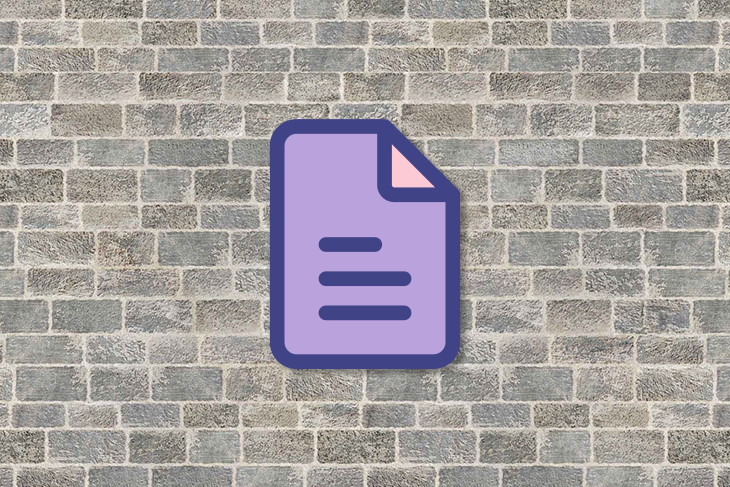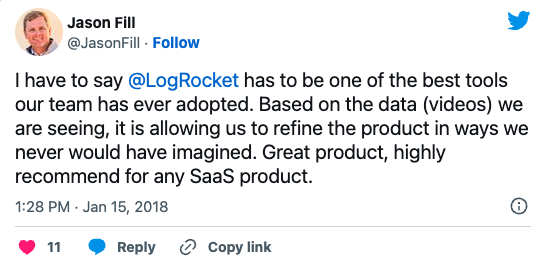

LogRocket’s Galileo AI watches every session, surfacing impactful user struggle and key behavior patterns.
Communication is essential for successful project outcomes. Distributing product status reports is a great way to keep team members and stakeholders informed about the product’s progress and enable senior stakeholders to make data-driven decisions.

In this guide, you’ll learn what a product status report is and how to create compelling reports that effectively communicate where your development projects stand. We’ll also go over the components of a product status report, best practices, and practical examples to help you get started.
If you’d like to follow along and create your own status report as you read, use our free product status report template.
A product status report is a document that provides an overview of how a product development project is progressing, as well as any issues or concerns that may impact the project’s delivery or success.
A status report is typically created and distributed by the product or project manager to stakeholders, such as upper management, investors, and team members.
The frequency with which a product status report is issued depends on the specific timeline and organization of a project. Some teams may send reports weekly, while others may send them out on a bi-weekly or monthly basis.
Whatever cadence you land on, you should issue product status reports frequently enough to keep stakeholders informed and up to date on the project’s progress, but not so frequently that it becomes a burden to create and review. It’s also a good idea to ask recipients if they require updates more or less frequently and adjust your reporting schedule accordingly.
Product status reports can be distributed via email, a work management tool, a continuous Google Doc — anything that’s easy to create and share. Some organizations prefer to send reports via email because it allows them to easily distribute and track who has received the report. Others prefer a continuous Google Doc because it allows for easy collaboration and editing by multiple team members.
If your team already uses a work management or documentation tool, you may want to explore using that tool to share your status report. That way, the team is already familiar with the tool and there shouldn’t be any friction.
While the primary purpose of the product status report is to communicate progress, there are several benefits of frequently issuing product status reports. Doing so enables you to:
Product status reports can serve as a tool for facilitating collaboration among team members and stakeholders.

![]()
Learn more →
Without a product status report, team members may not be adequately informed to support project activities. This lack of communication might lead them to make inaccurate assumptions about the project’s health.
By providing a clear overview of the project’s progress, product managers can encourage team members to share their ideas and stakeholders to give feedback.
A product status report can help you identify and communicate issues or concerns that may impact the product’s success. This includes information about any risks or issues that have risen and actions taken to mitigate the risks.
Potential risks might include:
By identifying and communicating issues early on, you can proactively work with team members to keep the project on track.
Product status reports help you automate the communication process during the course of a project.
Typically, key stakeholders are curious about the progress of the project and may reach out at various times during the day or week. The process of sharing updates and addressing concerns individually could become tedious and monotonous.
With a status report, you can save yourself the hassle of completing repetitive tasks and free yourself up for other important tasks and responsibilities.
Distributing product status reports can also help you keep track of action items. By including next steps in your status reports, you give stakeholders an opportunity to follow up on upcoming tasks and understand the delivery approach.
Writing status reports also instills a sense of accountability in the product manager because they have to communicate broadly that certain tasks will be completed by a specific time.
A product status report should include the following components:
The overview is a brief summary of the project or product. This section should include the following:
In this section, include details about the project’s progress. For example, you might describe key milestones completed and provide a summary of work still in progress.
This section is an opportunity to communicate any risks or concerns about successful project completion.
In addition to listing the risks and challenges associated with the project, you should also share potential impact to the project’s health. Will delivery be delayed? Will there be less impact? Could it potentially force a complete cancellation of the project? This information will help stakeholders in their decision making.
It’s also valuable to propose actions to mitigate the risks, or actions taken. Any additional information such as changes to scope, timeline etc. can be shared in this section.
In this section, include information about next steps and upcoming deliverables. List tasks to be completed by the next reporting period and specify a few later deliverables and deadlines. Also include decisions to be made by stakeholders that are currently blockers.
Product status reports should be written in a clear and concise manner. Avoid using unnecessary technical jargon or phrases that make it difficult for readers to understand.
A status report should be brief with key points outlined in a manner that enables the reader to capture key points at a glance. The content should be no longer than two pages.
Another key aspect of an effective product status report is the level of transparency. You should be straightforward and honest about the project’s health, even when it is not favorable. Being transparent helps you build trust with stakeholders, create a culture of open communication, and gain support where needed.
The format and presentation of the report is also critical. Remember, you are not writing an essay. Organize your report in a manner that is easy to read with clear headings to guide the reader through the document. Use tables, charts, bullet points, and adequate line spacing to make your findings easier to understand.
Actionability is also key. Keep reports focused on activities, both in progress and upcoming. Stakeholders should have a good sense of actions they need to take, if any. By providing actionable information, you ensure that stakeholders understand project needs and their responsibility to serve them.
Finally, it is important to communicate overall project health. Do not leave your stakeholders guessing or making assumptions. This comes down to providing a clear explanation of the current health of the project.
Often, projects are described as on track, off track, or at-risk. On track indicates the project deliverables so far have been completed on time. Off track indicates a slight delay but potential for returning back to schedule. At-risk is a call for help, indicating significant delay and major concerns.
As noted previously, a product status report might be distributed in a variety of ways, some of the most popular and straightforward being email and Google Docs.
A product status report sent via email might look something like this:
Another common way to share a product status report is via Google Docs. Below is an example of a complete product status report in document form:
| Task | Task owner | Deadline |
| Complete phase 1 of product development | Engineering team | January 30 |
| Test bulk upload features with internal users | Obianuju Ezeanyagu | Febuary 5 |
It is a good idea to use a template for your product status report to ensure all relevant information is captured in each report.
We’ve created a product status report template you can access for free by clicking here.
Effective product status reports are essential for product managers to communicate the progress of a product development project to stakeholders.
Typically, a product status report should contain a project overview, milestones, progress updates, risks or issues, ways to mitigate the risks, and action items.
It is important to keep your product status reports clear and concise, actionable, transparent, and easy to read.
If you keep these best practices in mind, you’re well on your way to delivering compelling, informative status reports that keep your stakeholders engaged and up to date.
LogRocket identifies friction points in the user experience so you can make informed decisions about product and design changes that must happen to hit your goals.
With LogRocket, you can understand the scope of the issues affecting your product and prioritize the changes that need to be made. LogRocket simplifies workflows by allowing Engineering, Product, UX, and Design teams to work from the same data as you, eliminating any confusion about what needs to be done.
Get your teams on the same page — try LogRocket today.